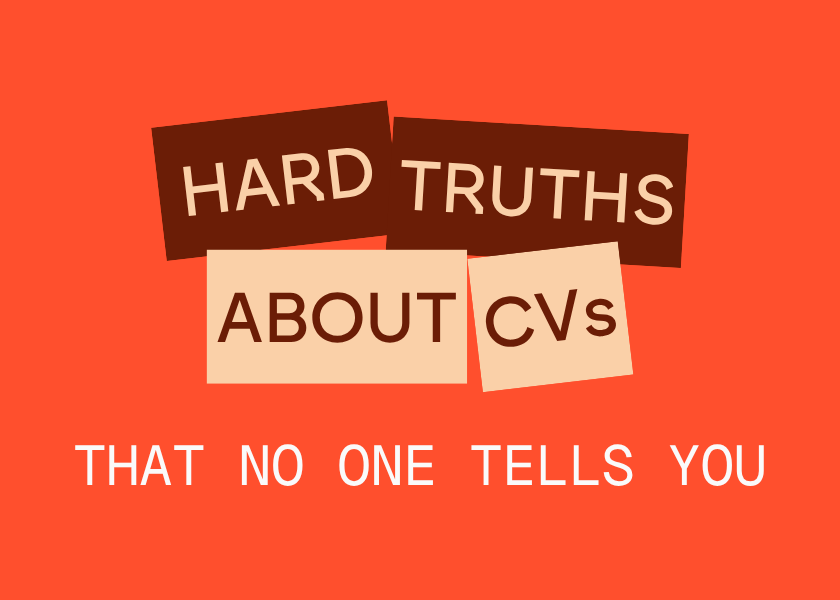Hard Truths About CVs That No One Tells You
Why your 2-page PDF isn’t doing all the heavy lifting you think it is.
Let’s keep it real - most CV advice sounds like it’s been copy-pasted from a 2011 careers fair leaflet. "Keep it to two pages. List your skills. Use a clean font." Sure. Fine. But if you’re trying to break into the creative industry - where hiring is often messy, subjective, and driven by vibes as much as experience - you need to know how to make yours stand out against the rest.
So here are a few hard truths about CVs that no one tells you. Except us 😇
1. Most people don’t read your CV. They scan it (for about 4 seconds).
Harsh but true. Recruiters, creative directors, studio managers - they’re all scanning for keywords, relevant experience, or a standout phrase. If your CV is a wall of text with no hierarchy, it’s getting skimmed, not studied.
💡 Fix it: Make it scannable. Use clear sections, bold headers, bullet points, and short, punchy language. Think of it like designing a landing page - not writing a novel.
2. AI will probably see your CV before a human does.
Thanks to applicant tracking systems (ATS), your CV could be filtered by an algorithm before anyone human lays eyes on it. These systems are trained to look for keywords and basic formatting - which means a beautifully designed CV in Canva or InDesign might never even make it through.
💡 Fix it: Keep a clean, text-based version of your CV for uploading through job portals. Use standard job titles and simple formatting. You can still have your fancy one for emailing directly or sharing as part of a creative portfolio.
3. Your CV doesn’t show your personality - your digital presence does.
In creative industries, who you are matters just as much as what you can do. And while a CV shows experience, it doesn’t always show style, thinking, curiosity, or ambition. That’s why people check your LinkedIn, website, blog, Instagram, TikTok... whatever gives them a better sense of you.
💡 Fix it: Build your digital CV. Make sure your LinkedIn is up to date. Share your work. Talk about your process. Let people see who they’re hiring - not just a bullet point list of what you did.
4. Experience ≠ impact
A long list of roles isn’t always impressive. What stands out is what you did in those roles. The campaigns you contributed to. The ideas you brought. The work you’re proud of.
💡 Fix it: Focus on outcomes, not job descriptions. “Designed a social campaign for X that increased engagement by 40%” > “Worked on client social media.”
5. Typos and weird formatting still get you binned.
It sounds basic, but it’s true. And it is basic.
Especially in roles that involve attention to detail (so... most creative jobs). If your CV is full of errors, broken links, or misaligned layout, it’s a red flag.
💡 Fix it: Get someone to proofread it. Then read it out loud. Then print it and read it bottom to top. (Yes, seriously, this is a great way to proofread something you’ve read lots before.)
6. The best CVs tell a story - not just your job history
What connects the dots between that internship, your side hustle, and your final uni project? What are you into? Where are you heading? A good CV makes sense of the chaos. A great one adds a bit of spark.
💡 Fix it: Add a short intro or personal statement that gives context. Doesn’t need to be cringe or corporate - just honest and clear about what you’re about.
Final thought 💭
CVs aren’t dead. But they’re no longer the only (or even the main) thing people use to decide whether to hire you. So yes, make yours good. But also make sure the rest of your online presence is pulling its weight too.
And if you’re not sure where to start? We’ve got a guide for that too - coming soon ✌️
Upgrade your subscription to access the rest of this week’s CV surgery content. Use code AUG2025 to get your first month free 💸




